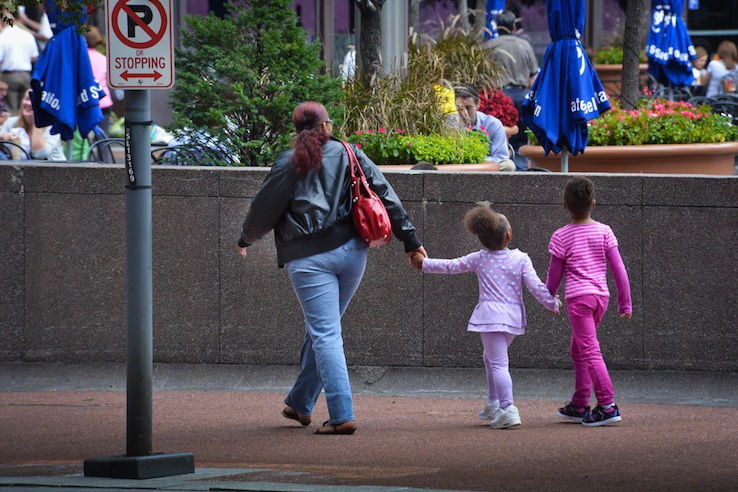Survey raises questions about social equity
Social equity has long been seen as a key aspect of sustainable communities. In 1996, for instance, the President’s Council on Sustainable Development described a sustainable nation as one that includes a growing economy that provides equitable opportunities for satisfying livelihoods, and a safe, healthy, high-quality life for its citizens now and in the future.
If that’s the case, southwestern Pennsylvania has work to do. Sharp racial disparities in quality of life measures ranging from household income to health insurance exist throughout the region, an extensive survey of residents reported in 2012.
Some 1,800 Greater Pittsburgh residents were interviewed for the Pittsburgh Regional Quality of Life Survey conducted by Pittsburgh Today and its research colleagues at the University Center for Social and Urban Research. And African Americans accounted for more than 20 percent of them – an oversampling that was done to gain a statistically valid glimpse of the region through the lens of race.
The good news is that what residents have in common outweighs what divides them, even when race is considered. But differences among races in some cases are troubling.
Nowhere is the racial divide more apparent than in household income and the ability to make ends meet. The survey data, for example, confirm the conclusion that U.S. Census Bureau and U.S. Department of Labor estimates have long suggested: African Americans in the region can expect to be unemployed at roughly twice the rate of other races.
Survey data show that the non-seasonably adjusted jobless rate among African Americans living in the seven-county Pittsburgh Metropolitan Statistical Area stood at 14.1 percent over the three-months in late 2011 when interviews were conducted. The jobless rate among residents of other races at that time was 6.7 percent. Those residents were mostly white. The national unemployment rate estimated by the U.S. Census and Labor bureaus over the same period was 7.4 percent.
Stark differences are also exist in household income. More African Americans report earnings in the lower income brackets than other races, and fewer African Americans in the region are earning enough to place them in the highest brackets. More than 36 percent earn less than $25,000 a year, for example, compared with about 19 percent of other races. And more than 75 percent of African Americans earn less than $50,000 compared to 49 percent of other races.
Given such disparities, it’s not surprising that racial differences are also apparent when financial hardship is examined. Fewer than 37 percent of African Americans report never having trouble paying their monthly bills, while 55 percent of whites in the region never have difficulty. And nearly 18 percent of African Americans in the region say they often or always have trouble paying their monthly rent or mortgage, utilities and other bills for basic necessities. That’s more than twice the hardship rate that residents of other races report.
The gap in homeownership among the races is wide. About 41 percent of African Americans report living in a home they or a family member own – about half the homeownership rate that whites and residents of other races report. African Americans are also more likely than other races to give low ratings to the structural condition of the houses or apartments they live in.
Residents of all races report satisfaction with the quality of the education their children receive throughout in the 32-county survey region, which includes the Pittsburgh MSA and surrounding counties in Pennsylvania, and parts of Ohio, West Virginia and Maryland. But the similarities pretty much end there. African Americans are twice as likely as other races to describe the financial resources available to support those schools as inadequate. And while more than half of white residents rate their schools as “very safe,” fewer than 15 percent of African Americans feel the same way about the schools their children attend.
The survey also reveals the extent to which equity is an issue in whether residents have access to health care. The vast majority of all races do. But nearly 16 percent of African Americans in the region report not having some type of public or private health coverage compared to 9.5 percent of residents of other races. And African Americans are much more likely to forgo care due to cost. More than 19 percent report that at least once during the previous year they needed to see a doctor but couldn’t afford to do so.
The survey data are not all grim for African Americans. They are more likely than residents of other races to report that their household finances improved over the past three years. And they are more optimistic about what the future will bring. Two-thirds of African Americans believe their household finances will get much or somewhat better in the coming years, which is more than twice the rate of other residents who see better days ahead.





